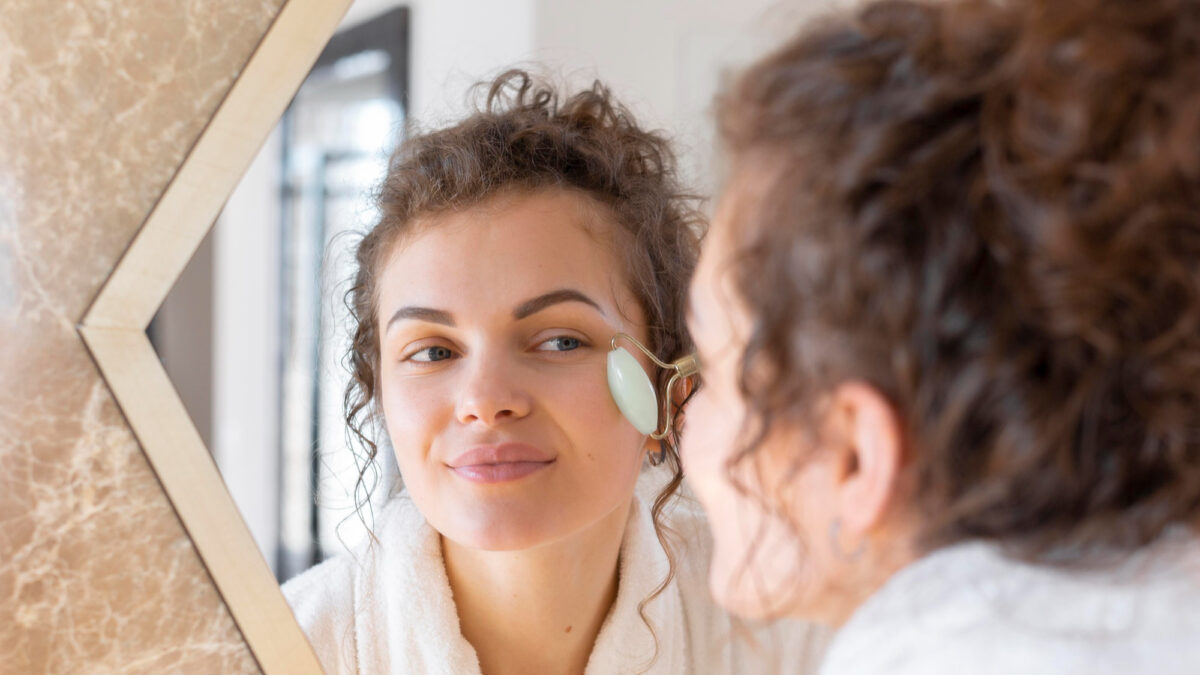Fake tan stains can be frustrating, whether they result from a self-tanning mishap or a spray tan gone wrong. These unsightly streaks and splotches often linger longer than we’d like. Fortunately, effective methods exist to rid your skin of these telltale signs of a faux glow gone awry.
This concise guide will delve into practical steps and readily available solutions to help you swiftly and efficiently remove fake tan stains. Say goodbye to those unwanted orange patches, and get ready to reclaim your flawless skin with these proven techniques.
Pre-Removal Preparations
Before tackling fake tan stains, assembling the right tools and products is crucial. Here’s a checklist of items you’ll need:
- Exfoliating gloves or scrubbing brush: These will aid removal.
- Natural exfoliants: Baking soda or lemon juice.
- Hydrogen peroxide or vinegar (optional): For tougher stains.
- Moisturizer: To soothe your skin post-treatment.
- A soft towel: To pat your skin dry gently.
- Sunscreen: To protect your skin afterward.
Before starting the removal process, consider these precautions:
- Perform a patch test: Test the chosen stain-removal method on a small skin area to ensure you don’t have an adverse reaction.
- Avoid open wounds or sensitive areas: Don’t apply stain removers to cuts, bruises, or sensitive regions, as they may irritate.
- Remove jewelry: Remove accessories to prevent staining or damage.
- Work in a well-ventilated area: If using chemical solutions, ensure good airflow to minimize inhaling fumes.
Understanding your skin type is crucial when removing fake tan stains. Different skin types react differently to stain-removal methods. Oily skin may tolerate more robust solutions, while sensitive skin requires gentler approaches. Consider your skin’s unique needs and sensitivities to achieve the best results and avoid potential irritations or complications.
Methods for Removing Fake Tan Stains
Dry Brushing:
- Dry brushing involves gently exfoliating the skin with a natural bristle brush. This method removes the top layer of tanned skin cells, helping to fade tan stains gradually.
- To use dry brushing effectively, start with dry skin and a dry brush. Begin at your feet and brush upward in long, gentle strokes, always moving towards your heart. Pay extra attention to stained areas, but avoid scrubbing too vigorously to prevent skin irritation.
Scrubs and Exfoliating Gloves:
- Scrubs containing abrasive particles or exfoliating gloves offer mechanical exfoliation to remove dead skin cells and tan stains.
- Apply the scrub or wear the exfoliating gloves in the shower on wet skin. Gently massage the product over stained areas using circular motions. Rinse thoroughly. Avoid over-scrubbing since this might irritate the skin.
Lemon Juice:
- Lemon juice’s natural acidity helps break down the fake tan pigment. It gradually fades the tan stain.
- To use lemon juice, apply fresh lemon juice directly to the stained areas using a cotton ball or your fingers. Leave it on for a few minutes, then rinse off. If you have sensitive skin, avoid using lemon juice. Always follow with moisturizer and sunscreen.
Baking Soda:
- Baking soda has mild abrasive properties that aid in removing fake tan stains.
- Mix baking soda with water to form a thick paste. Apply the paste to stained areas and gently
rub in a circular motion. Rinse off with warm water and pat dry. Be gentle to avoid skin irritation.
Hydrogen Peroxide:
- Hydrogen peroxide can effectively bleach away fake tan stains due to its oxidizing properties.
- Dilute hydrogen peroxide with water in a 1:1 ratio. Apply the mixture to stained areas using a cotton ball or pad. Leave it on for a few minutes, then rinse off with water. Avoid using concentrated hydrogen peroxide on the skin, as it can be harsh. Moisturize after treatment.
Vinegar:
- Vinegar’s acidic properties help break down the fake tan pigment and exfoliate the skin.
- Dilute white vinegar with water in a 1:1 ratio. Apply the solution to stained areas using a cotton ball. Leave it on for a few minutes, then rinse off. Vinegar has a strong smell, so be prepared for that. Follow with moisturizer.
Commercial Fake Tan Removers:
- Various fake tan removers are available on the market, typically formulated to break down and effectively remove tan pigment.
- Follow the instructions provided on the product. Usually, you’ll apply the remover to the stained areas, wait for a specified time, and then wipe or wash it off. These products are designed to be gentle on the skin while effectively removing the tan. Always perform a patch test first to check out any unwanted effects.
CAUTION: Choose the method that suits your skin type and preferences, and remember to be patient and gentle when removing fake tan stains.
To Conclude
In conclusion, tackling fake tan stains requires the proper methods: exfoliation, natural remedies, and commercial solutions. Patience and persistence are key. Share your tips and experiences, and remember, flawless skin is achievable after a fake tan mishap.
